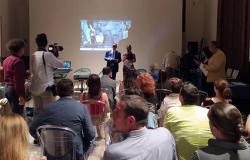PALERMO – These in the first half of June should have been days of excitement, preparations, waiting and hope. This year, however, among the hills and valleys of the Lower Madonie the combine harvesters will remain still, here silence will take the place of the laborious roar of the machinery. And the hope, perhaps, of a good price has already vanished.
Driven away by the certainty of a zero harvest. The fields in this area were among the hardest hit by the drought. Hundreds and hundreds of hectares, as far as the eye can see, almost totally barren. Even those dedicated to fodder and natural pastures, a very hard blow also for animal husbandry.
“Some of the best Sicilian durum wheat, including organic ones, come from the areas of Alimena and Bompietro and in general from the Madonie – declares Camillo Pugliesi, president of the Cia Western Sicily – but the almost total absence of rain prevailed. This year there is no harvest, not even fodder, despite all the expenses faced by the producers. Furthermore, expenses have increased significantly compared to other years. No one can afford not to collect a euro after spending thousands, immediate support is needed. There is a serious risk of the closure of many companies and the loss of a very rich cereal and livestock heritage”.
“I’m 82 – says Antonio Li Puma, cereal producer and breeder – I’ve always been a farmer and it’s the first time I’ve found myself faced with a situation like this, a drought I’ve never seen before. Not only plants suffer, but also animals… not even wild boars can find food. We have covered all the expenses, but we will not collect anything, there will not be a grain of wheat. It is the death of the farmer.”
“I have never seen such a bad year – echoes another producer and breeder, Giovanni Folisi – to sow my fields with wheat and fodder I spent a total of 30 thousand euros and I will get nothing. In fact, I now have to buy hay for the animals, the price of which has tripled: for a round bale, if previously you spent 25 euros, now you need 80-100. Aside from the prices, it is still an unsustainable situation, because we have no water to give to our livestock. I had about sixty items, I had to sell about thirty of them. I don’t know whether to try to hold on any longer or quit.”
Among the cereals, those few ears that have managed to sprout are literally empty, therefore it is not worth threshing: “We should have had plants even one meter high – explains Rosario La Tona, manager of the Agricultural Assistance Center of Bompietro – and instead they arrive barely 30 centimeters and those few sprouted ears are empty. It’s a disaster, it’s a product that can’t even be threshed.”
“This area – adds Vincenzo Valenti, CIA representative Basse Madonie – was particularly affected by drought after the very serious fire last summer which devastated hundreds of companies, one catastrophe after another. The greatest criticality at the moment concerns the livestock sector, we risk losing a heritage built over the years and which will already be difficult to rebuild”.
Check the email to confirm your subscription to the Agricultura.it newsletter
Advertising information




